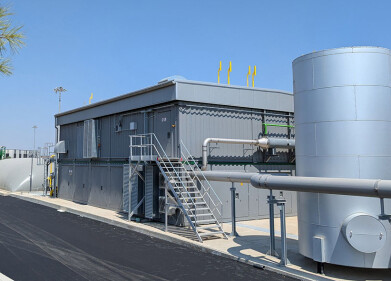Air clean up
What Is Direct Air Capture?
Dec 09 2020
Political leaders and corporations across the globe have taken too long to implement measures aimed at slashing the emissions of greenhouse gases. At this point, the scientific community broadly agrees that we have already released too much carbon into our atmosphere to avoid a global temperature hike of over 1.5°C – that is, unless we can remove some of the carbon already present in the environment.
While research into carbon capture and storage (CCS) has been ongoing for many years, direct air capture (DAC) is something altogether different. While CCS focuses on removing carbon from the flue streams of power plants and industrial smokestacks, DAC attempts to pull carbon directly from the atmosphere itself. It might sound so futuristic that it’s almost far-fetched – but the movement appears to be gathering pace.
How it all works
DAC is a trickier feat to achieve than CCS, since the concentrations of carbon present in ambient air are far lower than those emanating from the flue stream of a power plant or factory. The most common method of making it work is through the use of chemical reactions, which bind themselves to carbon molecules and separate them from the other particles found in the atmosphere. They can then be removed and stored safely in another location.
In the UK, that location is touted to be the spent oil and gas fields which lie beneath the waves of the North Sea. The high standards and methods for environmental monitoring in Britain mean that the country is already equipped to undertake a project of this kind and has the engineering knowhow to ensure that the carbon won’t escape after being pumped underwater. With that in mind, the UK government has already signalled it will spend £1 billion on four industrial CCS clusters and is welcoming expansion from Swiss company Climeworks into British territory to incorporate DAC, as well.
A breakthrough on the horizon?
DAC is still, as yet, in the planning stage. At present, there are just 15 plants operational across the globe, all of them based in either Europe or North America. They’re also incredibly expensive to run, with the costs associated with extracting a single tonne of CO2 from the atmosphere estimated at $1,000 at the present time. However, those working within the industry are hopeful that the outlay can be reduced tenfold as operations are scaled up and the technology becomes more sophisticated.
Meanwhile, there are two promising projects in the works in Europe. Climeworks are responsible for the construction of several DAC centres on the continent, while their largest plant yet is scheduled to open in Iceland next year. It will be capable of removing 4,000 tonnes of carbon from the air each year. Canadian competitors Carbon Engineering, however, are going one further – they aim to develop a plant capable of pulling a million tonnes of CO2 from the atmosphere per annum.
Events
Jul 15 2025 Brighton, UK
Jul 23 2025 Sydney, Australia
Aug 24 2025 Stockholm, Sweden and online
Aug 27 2025 Busan, South Korea
Sep 02 2025 Mexico City, Mexico






.jpg)







